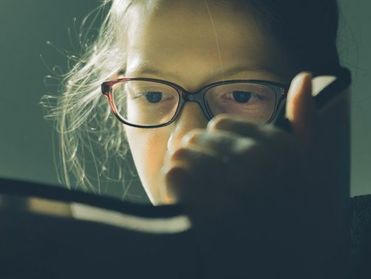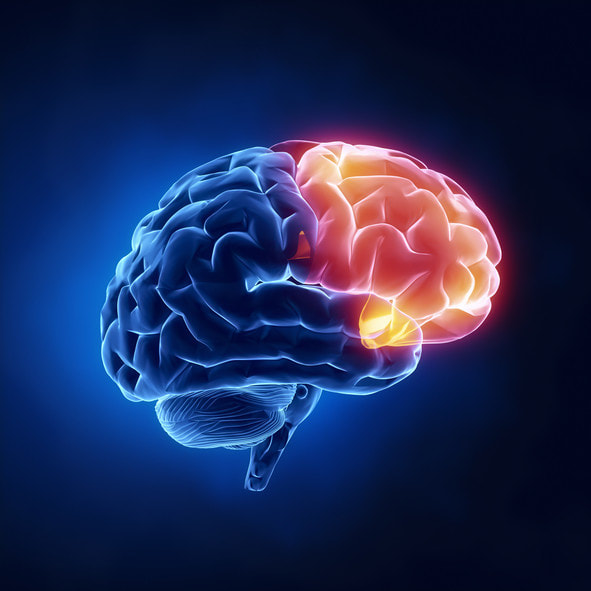|
(15-minute read)
Primitive reflexes defined
Have you ever wondered what magic lies at the heart of child development? What allows a newborn to go from a helpless, screeching, squishy ball of flesh to an upright, mobile, dexterous, babbling toddler? What possesses a baby to unfurl himself, to lift his head, to roll over from back to tummy, to drag himself along the ground, to crawl on all fours and eventually walk… all within his first year of life? Just how does a baby know what to do? Well, the answer… and the magic… lie in the set of reflexes, called the primitive reflexes (aka infant or neonatal reflexes). These reflexes are normal, automatic reactions to external stimuli – such as the movement of the head (vestibular), and things a baby feels, sees, hears or experiences – which occur without conscious thought. Like the act of breathing and the heart beating, these automatic reactions occur in the part of the brain at the back of the head called the brainstem or lower brain. Simply stated, a reflex creates a loop that begins with a sensory stimulus to the brainstem, where all automatic reactions occur, and ends with a responding muscle contraction, creating a specific movement pattern. These reflexes facilitate baby’s progress through the stages of natural development. The role of primitive reflexes The primitive reflexes account for most movement patterns in the womb and during the first months of life. Several reflexes play a key role in the birth process itself and then in ensuring baby’s survival. In addition, they support the development of the higher brain – also called the cortex… our conscious brain – which controls muscle tone and movement, sensory integration, cognition, and learning skills. It is none other than the reflexes that allow for a bottom-up connection of the body to the higher brain so that baby’s nerve networks can be fully connected, and baby can begin to act in a more conscious and deliberate way. The primitive reflexes are said to be “integrated” when the higher brain takes over conscious and deliberate movement, thoughts and feelings, and the lower brain is no longer triggered by stimuli. Even after the integration of the primitive reflexes, they remain as the scaffolding behind voluntary and deliberate thought and movement. They can resurface, however, to ensure survival (aka fight, flight or freeze) when trauma or stress causes us to revert to the lower brain. When there are incomplete or weak connections, a reflex is said to be unintegrated, active, or retained; consequently, the reflex will be triggered constantly thereby disrupting communication to the lower brain and blocking some information from reaching the higher brain. Unintegrated reflexes cause many problems – some serious, others less so – which can lead to a lifetime of learning disabilities, and emotional, behavioural and social issues. The proper integration of primitive reflexes is essential to a child’s… a teen, an adult’s… ability to self-regulate and to organize and control the senses. Primitive reflexes summarized There are more than thirty different primitive reflexes. They all emerge in utero (in the womb) at different points during the pregnancy. They play a key role in allowing baby to go through the birth process, and each of them enable baby to automatically do the things that will ensure baby’s survival and development after birth. The 14 primitive reflexes summarized here are the ones that, if retained past the age when they should be integrated, are consistently associated with causing brain imbalance and delays in development:
2 Comments
 At times I will tell parents of children that I have assessed that their child is not seeing properly. The child all the while doesn't know any different, thinking that seeing double is normal or they have been labeled with inattentiveness but are unaware that their eyes aren't seeing properly. The parents often will tell me that they have just seen an optometrist who said that their child has 20/20 vision, with good visual acuity. However seeing and vision are not the same. Vision deals with the part of sight that receives the image on the retina to be processed. Having 20/20 vision does not necessarily mean you have perfect vision. 20/20 vision only indicates the sharpness or clarity of vision at a distance. Seeing however is the physical process of sight, how well can we steer and control our eye muscles to see. It's made up of four elements: focus, teaming, fixation, and eye tracking. Together, this is what is called "eye fitness".
These are all some of the capacities of the frontal lobe’s executive functions in the cognitive higher brain that plays a key role in:
MRI scans shows that only at 21 years of age is the frontal lobe area of the higher brain (neo-cortex) mostly matured to allow top-down brain pathways to be developed to override lower brain functions. However you as parents can positively impact the connections from the lower infant immature survival brain to the frontal lobes of a child’s brain as early on as the birth of your child. I will present FOUR ways that you as parents can be proactive in helping your child make those very vital connections to their brain’s control center.  If you have ruled out:
Then your child will be having a temper tantrum which are intense storms of feelings. They usually happen because a child’s higher brain is not sufficiently developed to deal with powerful feelings in more socially acceptable ways. Many tantrums are the result of genuine emotional pain that should be taken seriously: the pain of impotence, deep frustration, loss, disappointment, and feeling misunderstood. Only some tantrums are primarily motivated by a wish to have control over a parent. |
AuthorWrite something about yourself. No need to be fancy, just an overview. Archives
March 2021
Categories |



 RSS Feed
RSS Feed